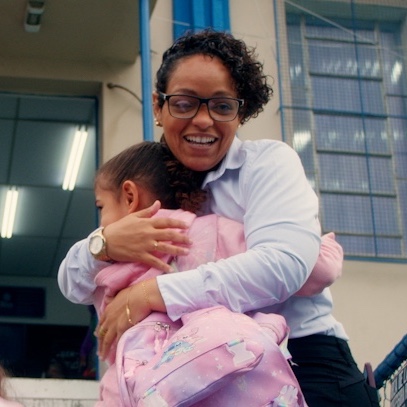Quiet connections: bridging healthcare understanding with GPT-4
Biomedical informatics and pediatric endocrinology professor at Vanderbilt University Medical Center

My 90-year-old grandmother lives in Ghana, West Africa, where access to specialized medical care can be limited. Recently, she began experiencing hearing difficulties, saying that things had “become too quiet.” My aunt, who also lives in Ghana, took her to an audiologist. Following the appointment, my aunt snapped a picture of the audiologist’s report with her phone. She then texted the message to our family in America, 5,000 miles away, and asked me to help interpret the results.
Now, I am a pediatric endocrinologist, not an audiologist or any of the other various “ologists.” Regardless, my family turns to me for advice on anything health related, and I do what I can to help. As I reviewed the image of the audiology report, the stereotypical illegibility of the doctor’s handwriting initially left me feeling flustered. But I downloaded an app with optical character recognition (OCR) capabilities to convert the handwritten report into text. The results were not perfect, but it was a start.
Next, I pasted the raw text into GPT-4 and asked for an interpretation. Despite the OCR errors, GPT-4 provided a reasonable interpretation of the report, even correcting words like “hertz” and “sensorineural” that the OCR had misinterpreted. After a few iterations and requests for simpler explanations, I modified GPT-4’s interpretation into a patient-friendly explanation of my grandmother’s ailment. I then called my aunt and explained the pertinent details: My grandmother was experiencing presbycusis, a condition that could be mitigated through binaural amplification. In other words, grandma had age-related hearing loss and would benefit from hearing aids. As I heard my aunt yelling this explanation to my hard-of-hearing grandma, I had to smile.
AI tools like GPT-4, which inherently facilitate communication and clarity, have the potential to become one of our most valuable allies in health.
This experience served as a powerful reminder that at its essence healthcare revolves around communication and understanding. AI tools like GPT-4, which inherently facilitate communication and clarity, have the potential to become one of our most valuable allies in health. While not all providers are utilizing these tools, some patients and their families have already discovered their potential in interpreting clinical notes, lab results, and radiology reports.
Newer models like GPT-4 could transform healthcare in under-resourced areas and the developing world. By preserving context during the conversion of handwritten paper records to digital formats, these tools enhance their value to providers. This enables improved analysis of data and decision support implementation. Healthcare professionals play a vital role in understanding these AI outputs and training them to meet our patients’ needs. Translation of handwritten records into accessible language also enables patients to review their personal health records through patient portals. This empowers them to use these tools to get clearer explanations of their medical documentation, understand the complexities of their conditions, and make decisions about their health with greater confidence.
In a world where access to quality healthcare remains a challenge for so many, the advent of AI technology like GPT-4 holds the promise of a true revolution.
The experience with my grandmother left me inspired and eager to explore the transformative potential of AI in healthcare to foster stronger networks, bridge gaps in knowledge, and create new wisdom.
The view, opinion, and proposal expressed in this essay is of the author and does not necessarily reflect the official policy or position of any other entity or organization, including Microsoft and OpenAI. The author is solely responsible for the accuracy and originality of the information and arguments presented in their essay. The author’s participation in the AI Anthology was voluntary and no incentives or compensation was provided.
Kumah-Crystal, Y. (2023, June 26). Quiet Connections: Bridging Healthcare Understanding with GPT-4. In: Eric Horvitz (ed.), AI Anthology. https://unlocked.microsoft.com/ai-anthology/yaa-kumah-crystal
Yaa Kumah-Crystal
Dr. Yaa Kumah-Crystal is a Pediatric Endocrinologist and Biomedical Informaticist at Vanderbilt University Medical Center. Her research focuses on enhancing communication in the Electronic Health Record through documentation, voice technology, and exploring generative AI pathways for clinical summaries through EHR metadata.






